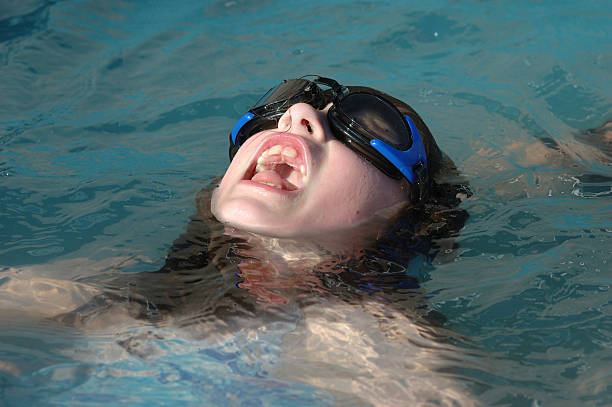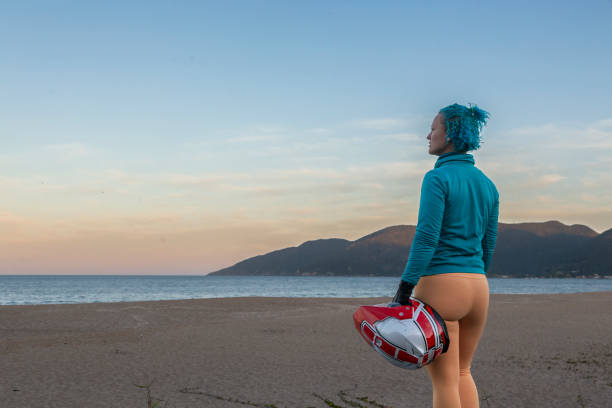Swimming pool attendants know the appeal of the vending machines in the lobby. Swimming makes us crave calories. Usually, not the ones found in apples or oranges. Some research studies have looked into this phenomenon. However, they come up with contradictory findings. The explanations range from simple, such as the fact that swimming requires large muscle groups over a long period, to more complex ones involving water temperature.
Many studies are controversial and have poor methods or small sample sizes. However, swimming causes us to be hungrier than similar intense sports such as long-distance running or cycling. This article will explore some of these theories more in depth to find out why athletes who do other sports have a stronger appetite after exercise.
The availability of food
Some simple but mostly incorrect explanations exist as to why swimming seems to increase calorie consumption. In a pool, there will be many vending machines and cafes where you can easily buy food and beverages. Sports like football and jogging are usually played outdoors, where calories are not easily available. This explanation, while logical, can be easily disproven as the primary reason for increased appetite in swimmers.
Researchers present the same options to participants after exercising in studies examining sports’ effects on weight reduction. Several studies have concluded that increased appetite after swimming makes swimming a less effective intervention for weight loss than walking or cycling at a similar intensity, regardless of whether food is available.
SWIMMING IS A STRONG AEROBIC EXERCISE
Swimming is a great exercise for a variety of large muscles, especially when you mix up your strokes. Front crawl, for instance, targets the lats and chest muscles, while the butterfly targets the shoulders, chest and back. A swimmer’s training session will usually involve a greater percentage of muscles than other athletes, like cyclists. One possible explanation for an increased appetite is the energy expenditure distributed over several muscle groups.
Researchers found that swimming was among the least energy-intensive sports despite using more muscle groups. A 70kg person swimming laps will use approximately 326 kilocalories, which is significantly less than the energy expenditure of rugby (550 kcal), squash (610kcal), or jogging (9 km/h) (660kcal). Swimming may use more muscle groups but this doesn’t correlate with energy expenditure. Swimming is a very intense exercise, which is why people want to eat more calories. However, there are more complete answers.
Total time spent exercising
A fascinating theory for the increased appetite that occurs after swimming is because a swim session lasts longer than other sports. Swimming can take up to four hours, while other sports like running, cycling or football are rarely longer than two hours. It is important to consider the total amount of time spent exercising, as your body can enter a well-documented state called ‘exercise induced anorexia.’
You might have noticed that your hunger is usually only felt after you finish exercising. This can be attributed to hormonal changes that suppress appetite when exercising. This suppression of appetite is an evolutionary trait that allows us to exercise longer without stopping for food. This finding and the hormones that are involved in it remain a mystery.
The difference in total time spent exercising can be debunked by using the same method used to compare athletes involved in different sports while controlling variables. The amount of exercise time can be controlled in this case. However, swimmers still have a higher appetite than other athletes.
WATER TEMPERATURE
Most studies that examine post-exercise appetite do not consider that swimmers are subjected to colder water temperatures than those who engage in land-based sports. The theory is logical, but since swimmers exercise – and generate heat – does cold water have that much of an effect? Wouldn’t people who run at 6am also experience cold temperatures? Cold water, not cold air, causes post-exercise appetite to increase.
In a study that evaluated the effect of water temperatures on post-exercise hunger, athletes who were exposed to water temperatures between 20 and 25 degrees Celsius consumed approximately 44% more calories than those in water warmer – 3653 kilojoules to 2533 [4]. This study’s results were also echoed by another, which compared cyclists on land to those submerged in different temperatures of water [5]. Interestingly, cyclists in warm water consumed fewer calories than those on dry land, suggesting that temperature has a greater impact than previously believed.
There are a few reasons why water temperature has such an impact on appetite. In cold water, your body must work harder through compensatory mechanisms to maintain your body temperature. It is interesting to note that post-exercise appetite increases even when the athlete’s core body temperature does not drop. This suggests that the effects are more complex than we currently understand.
What does all this mean?
It’s likely that the body will respond to the continued exercise in cold waters with hormonal changes. This is what causes the increased appetite experienced by many swimmers. It’s not fully understood how the body responds to exercise in cold water, but it is likely that the body changes its hormones. This leads to the increased appetite many swimmers experience. How does this impact the average swimmer’s performance? You will need to have healthy snacks ready after your swimming session unless you can heat the pool to room temperature.





